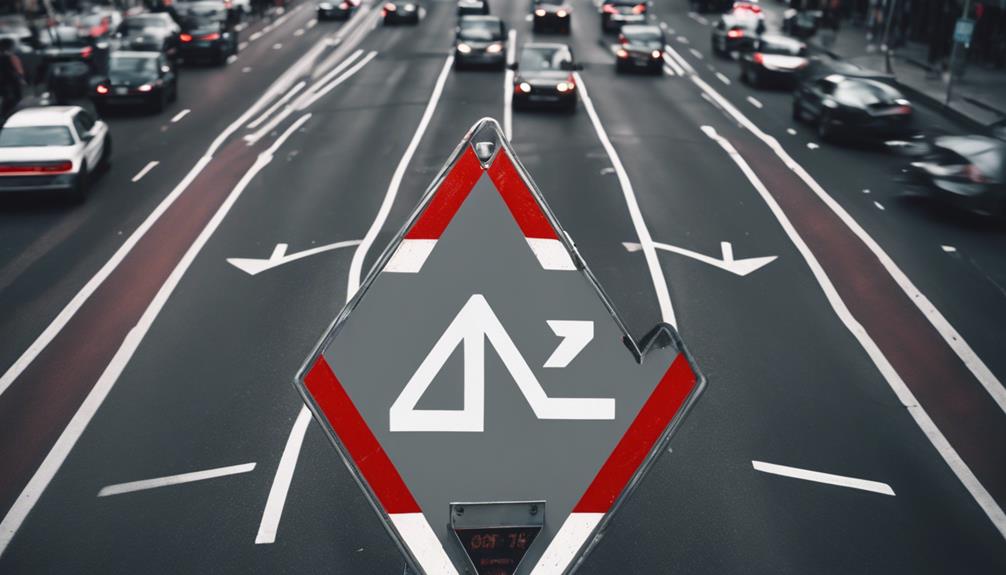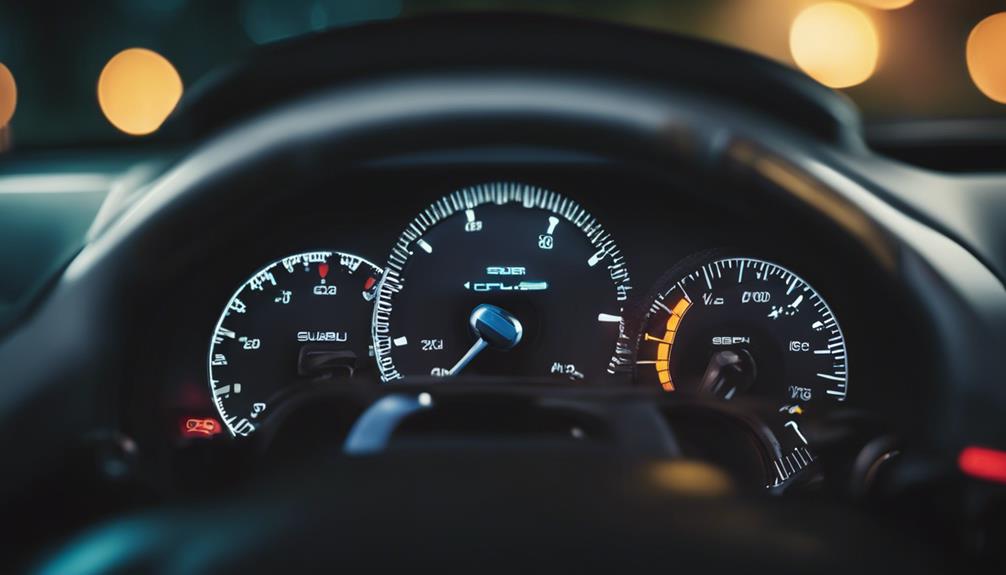Grasping the importance of the **give way** road sign aids in safe driving. This sign, marked by a white triangle with a red border, signals the need to **yield** to cars on different roads. Found at junctions, roundabouts, and pedestrian paths, it helps avoid crashes. Ignoring it can lead to accidents or fines. Yielding ensures smooth traffic and order. Understanding it can boost driving skills and enhance road safety.
Key Takeaways
- Give way sign signifies yielding the right of way to other vehicles or pedestrians.
- Mandatory at intersections for safety and traffic efficiency.
- Recognized globally for road safety regulations.
- Variations exist in design and wording internationally.
- Failure to yield can lead to accidents and penalties.
Importance of Give Way Sign
Understanding and adhering to the Give Way sign is vital for ensuring smooth traffic flow and preventing potential collisions at intersections. This traffic sign, marked with a white triangle outlined in red, indicates that drivers approaching the sign must yield the right of way to vehicles on the intersecting road. By obeying this sign, drivers contribute to the overall safety and efficiency of the road network. The Give Way sign is strategically placed at roundabouts, non-signalized junctions, and near pedestrian crossings to manage traffic effectively.
Comprehending the significance of the Give Way sign is essential for every driver. Failure to yield at these designated points can lead to accidents, traffic violations, and penalties. To maintain order on the roads, it's imperative to recognize and respect this traffic sign. When approaching a Give Way sign, drivers must slow down, be prepared to stop if necessary, and give way to other vehicles as required. Overall, understanding and following the instructions of the Give Way sign is fundamental for safe and efficient traffic management.
Rules for Yielding Right of Way

When approaching an intersection, it's vital to yield the right of way to oncoming traffic or pedestrians in order to prevent accidents and maintain smooth traffic flow. Yielding right of way means giving priority to other vehicles or pedestrians at intersections. Drivers must yield to oncoming traffic, pedestrians, or vehicles already in the intersection. This action is mandatory at a give way sign to guarantee safety and efficiency on the road.
Understanding and following yield sign rules are essential for safe driving practices. Failure to yield at a give way sign can result in traffic violations and potential accidents. Remember, the primary goal of yielding right of way is to promote order and safety on the roads. By yielding when required, you contribute to a harmonious and secure traffic environment for everyone. So, always be vigilant and ready to yield to others as needed.
Sign Placement and Visibility
Placing give way signs strategically before intersections and ensuring high visibility is vital for promoting safe and efficient traffic flow. Give way signs are typically positioned before intersections, roundabouts, and merge points to indicate where drivers must yield to other traffic.
Visibility is key, achieved by placing the signs at a height and angle that allow clear visibility to approaching drivers. Reflective materials and proper lighting further enhance visibility, especially during nighttime or low visibility conditions. The placement of give way signs must be precise to provide drivers with enough time to react and yield to oncoming traffic safely.
In some instances, additional road markings or signs may accompany give way signs to offer further guidance on yielding rules and traffic flow. It's important to adhere to the guidelines set by the Uniform Traffic Control Devices to ensure consistency in sign placement and visibility, ultimately contributing to a safer road environment for all.
History of Give Way Sign

Originating in the 1900s and first implemented in Germany in the 1930s, the Give Way sign has evolved into a globally recognized traffic control measure. This sign, used in the UK and various other nations, plays an important role in ensuring road safety. Here are some key points about the history of the Give Way sign:
- Initially introduced as a way to regulate traffic flow in Germany.
- Quickly adopted by many countries in the Middle East, South America, and Africa for road safety regulations.
- Specific regulations regarding the use of the Give Way sign were introduced in Saudi Arabia in 1984.
- The Give Way sign without fail indicates the necessity to yield the right of way at controlled-access road points.
Understanding the evolution and widespread adoption of the Give Way sign provides valuable insight into the importance of following traffic rules and regulations. Next, we'll explore the various international variations and meanings of this essential road sign.
International Variations and Meanings
The global significance of the Give Way road sign extends beyond its historical roots, as various countries have distinct interpretations and applications of this traffic control measure.
In the UK, the give way sign indicates yielding the right of way to other vehicles, especially in multi-lane road scenarios where drivers approaching from the right typically have priority. On roundabouts, drivers must yield or come to a stop based on traffic flow, as signaled by the give way sign.
In countries like the United States, similar yielding rules are followed, but the sign itself may vary in design or wording. For example, on the Federal Highway System, yield signs are used instead of give way signs to indicate the same traffic rule.
Understanding these international variations and meanings is essential for safe and efficient driving practices around the world.
Safety Tips and Considerations

When driving, it's crucial to always be vigilant and ready to yield to oncoming traffic or pedestrians when approaching a give way sign. To guarantee safety and compliance with traffic rules, here are some safety tips and considerations we should keep in mind:
- Make sure to understand the specific rules and regulations: It's a good idea to familiarize yourself with the laws concerning give way signs in the area you're driving.
- Maintain a safe speed: Driving at an appropriate speed will allow you to react quickly if you need to yield at a give way sign.
- Check for additional instructions: It's a good idea to look for any extra signs or road markings near the give way sign for clearer guidance on how to proceed.
- Remember the consequences of not yielding: Failing to yield at a give way sign can lead to accidents and legal repercussions, so it's vital to follow the rules diligently.
Frequently Asked Questions
What Is the Meaning of Give Way Road Sign?
The Give Way road sign indicates we must yield to other road users, ensuring smooth traffic flow. Adhering to this sign is important for safety at intersections.
Failure to obey can lead to accidents and violations. It's essential to slow down or stop as necessary, prioritizing the safety of all road users.
Remembering this rule is critical for preventing collisions and maintaining order on the roads.
What Do Give Way Road Markings Mean?
Give way road markings necessitate us to yield to other vehicles or pedestrians at intersections. They promote smooth traffic flow by fostering safety and order. Understanding these markings is vital for safe driving practices.
When we see a give way sign, we must slow down and give the right of way to others. It's like taking turns in a game; adhering to these rules keeps everyone safe on the road.
What Is the Meaning of Give Way in Driving?
In driving, 'give way' means yielding the right of way to others, prioritizing their safety. The give way road sign indicates this mandatory action. Ignoring it can result in violations and accidents.
Understanding and obeying give way rules are important for safe traffic flow. It's vital to follow these guidelines to guarantee efficient traffic management.
Always be prepared to yield and prioritize the safety of others on the road.
What Is the Use of Give Away Sign?
When driving, the Give Way sign is essential for safety. It tells us when to yield and give others the right of way. Ignoring this sign can lead to accidents and violations.
Is the Give Way Road Sign Similar to the Question Mark Road Sign in Any Way?
The Give Way road sign and the meaning of question mark sign are not similar in any way. The Give Way sign indicates that a driver must yield to oncoming traffic, while the question mark sign usually denotes an unknown or confusing situation ahead on the road.
Conclusion
In summary, understanding the meaning of the give way road sign is essential for safe driving.
Remember to always yield right of way to other vehicles when you encounter this sign on the road.
By following the rules and guidelines associated with the give way sign, you can help prevent accidents and keep yourself and others safe on the road.
Stay alert, follow the rules, and drive responsibly to guarantee a smooth and stress-free journey.










